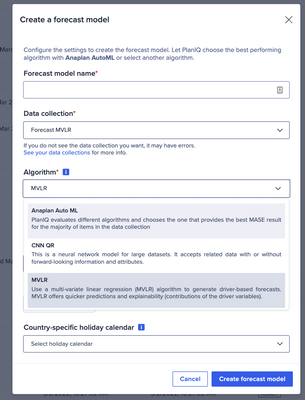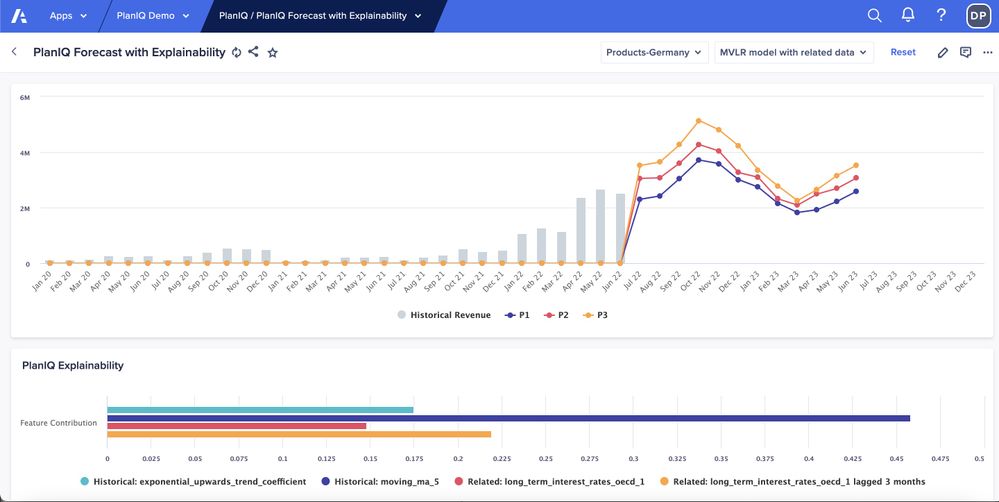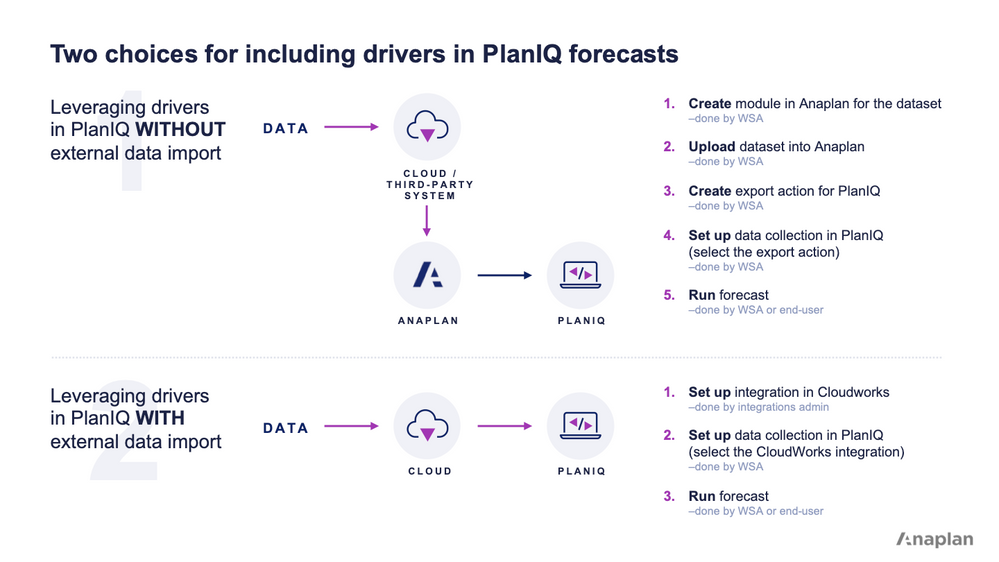Today Anaplan launched two new algorithms in its proprietary intelligent forecasting tool PlanIQ to help companies drive business outcomes through accurate and easy to develop forecasts.
Anaplan is proud to announce today that it has launched its first proprietary advanced forecasting algorithm, available to all PlanIQ customers. Multi-variate linear regressions (MVLR) offers fast, advanced statistical forecasting with feature importance, providing insights on how and which drivers most impact forecast results. Not only does MVLR deliver accurate forecast results across all use cases and industries; it is also highly accurate for small data sets, making it a great choice for finance forecasting use cases, where there may be less historical data than in demand planning. Being able to incorporate drivers into the forecasting algorithm, and being able to see which drivers impact the forecast results, will further drive forecast accuracy and time to value improvements for PlanIQ customers. Read more about MVLR on Anapedia.

In addition to its own forecast algorithm, PlanIQ now provides ensembling with the Amazon forecasting engine with the new Amazon ensemble algorithm. Amazon ensemble automatically finds the best forecast algorithm for each forecasted entity (e.g. SKU, cost center, location) to deliver more accurate forecasts with ease. This is particularly useful in cases where not all items being forecasted are the same, for example a car manufacturer that sells vehicles, parts, and accessories wanting to improve demand planning accuracy. All these entities will have different demand patterns, making it difficult to find one single algorithm that provides the best forecast results for each item. With ensembling, PlanIQ will do the hard work for the company, saving planners time and helping decision-makers make the best decisions for their business. Read more about Amazon Ensemble on Anapedia.
Like with Anaplan AutoML, Amazon ensemble is automatically set to select the forecast algorithms based on MASE. With this update, customers using Anaplan AutoML and Amazon ensemble can choose to change which quality metric is optimized by selecting MAPE, RMSE, or MASE in the forecast training UI. For more information about quality metrics, see this Anapedia page.
Both of the new algorithms natively include feature importance (explainability), which provides users with a break-down of the relative impact of each driver on the forecast results. With feature importance, PlanIQ customers can drive confidence in forecast results, saving time explaining forecast results and making plans more robust. Read more about feature importance (explainability) on Anapedia.

These new features come on the back of the introduction of a native Cloudworks integration – a much requested feature by our Early Access customers – that was released in July this year.
This native connection to existing cloud storage solutions allows PlanIQ customers to pull drivers from AWS S3 or Azure Blob directly into PlanIQ, without adding the data to Anaplan first, further increasing forecast accuracy and saving time that would have been spent setting up data modules.


